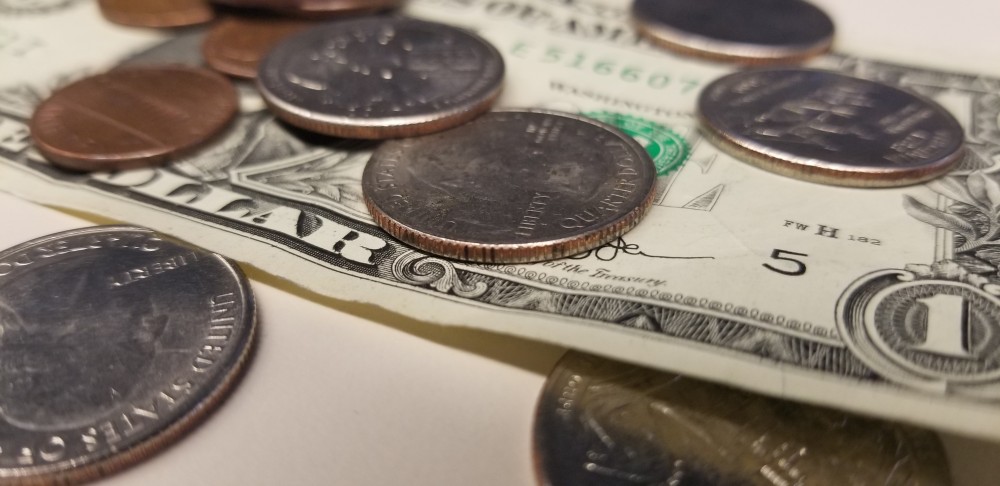Equal pay day: Exploring Michigan’s wage gap

GVL / Benjamin Hunt
Apr 8, 2019
Tuesday, April 2 was declared by Gov. Gretchen Whitmer as Equal Pay Day in Michigan. The date symbolizes how far into the next year a woman has to work to earn the same amount of money a man did during the previous year, sparking a national dialogue on the prevalence of the gender wage gap in Michigan and the rest of the United States.
The Equal Pay Act was signed by President John F. Kennedy more than half a century ago, yet today, women in Michigan earn .78 cents for every dollar earned by a man. Employers must pay all employees the same salaries for similar work, but the wage gap looks at the overall picture of money earned in a year, not specific workplaces. Causes of the gap have been explored for decades, but more and more studies conclude that women have more unpaid responsibilities than men, so men are spending more of their time getting paid for their efforts than women do.
In the 1970s, the pay gap existed because the majority of women were not yet active in the workforce, or because women didn’t have as many opportunities to further their education. Today, those factors have faded away; women obtain more graduate degrees than men and women’s participation in the workforce has skyrocketed in recent decades. Though plenty has changed, researchers and economists agree that what hasn’t changed, is the expectation of women to take care of most matters within the home.
Along with taking care of children, women are more often the ones expected to handle cleaning, housework, finance management, cooking and shopping — all tasks that are also specific career choices for some people — and there is no compensation for this “second shift.” Although women are commonly expected to be the one to leave work if their child is sick, they risk losing their jobs and subsequent wages by ensuring their child is cared for.
Grand Valley State University alumna Kelsey Hyde said that she is grateful to work in an environment that is flexible with her life as a single mother, but expresses that it wasn’t always this way.
“Lots of employers have asked me at interviews how I plan to handle snow days or my kid’s sick days since I’m a single mom… Prior to landing my current job, I felt pressure that I was either not going to be hired in the first place because I’m a single mom, or be fired if I couldn’t make something work.”
The wage gap also accounts for things that women specifically have to purchase, like menstrual hygiene items and the “Pink Tax” that makes women’s products more expensive than men’s. Additionally, a January 2019 report by The Zebra revealed that women pay more for auto insurance than men in more than half of the United States, including Michigan, where women paid 79 dollars more per year than men in 2018. The reason for this is unclear, when considering that the Insurance Institute for Highway Safety deemed men as 71 percent more likely to engage in risky driving in 2017.
The wage gap doesn’t stop at gender exclusion. According to Michigan State University Economics Professor Charles Ballard, women of color are more likely than white women to be affected by the wage gap, making roughly .55 cents for every dollar earned by men, while white women make .77 cents for every dollar. The Institute for Women’s Policy Research projects that women won’t receive equal pay until 2059 and estimates that over a lifetime, this loss of women’s wages amounts to $700,000 for a high school graduate, $1.2 million for a college graduate, and $2 million for a professional school graduate.
The wage gap is a complex issue, but discussing and acknowledging the factors that perpetuate the wage gap can help students and young adults everywhere navigate the reality of entering the professional workforce while paving a path toward change.

























